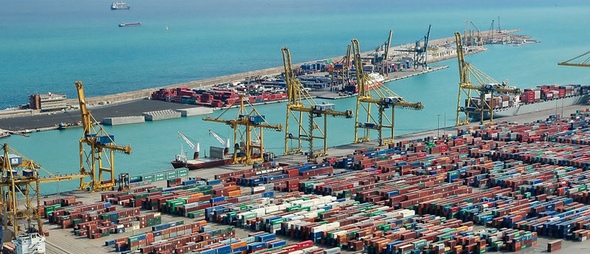The WTO lowers prospects for world trade in the face of risk accumulation

Commercial tensions and tightening of credit conditions slow down growth
Trade will continue to grow, but more moderately. The WTO foresees a growth in the volume of trade in goods of 3.9% in 2018, but that it will fall to 3.7% next year. The new forecast is below the estimate of 4.4% that the WTO released on April 12, but remains within the range of 3.1% to 5.5% indicated on that date.
The increase of real or proposed trade measures that affect several exports of important economies are a reality. To date, the direct economic effects of these measures have been limited, but the uncertainty they generate could be having consequences by causing a reduction in investment spending. The tightening of monetary policy in the developed economies has also contributed to the volatility of exchange rates and could continue to have this effect in the coming months.
“While the growth of trade remains robust, this downgrade reflects an increase in tensions among major trading partners, and now more than ever, it is vital for governments to settle their differences and show restraint. It will continue to support these efforts and ensure that trade continues to promote the improvement of living conditions, growth and job creation throughout the world, “said WTO Director-General Roberto Azevêdo.
The update of the commercial forecast is based on the forecast that real world GDP will grow at market exchange rates of 3.1% in 2018 and 2.9% in 2019. This supposes a quotient between the growth of trade and the of GDP of 1.3 for both years.
Trade policy measures are not the only risk contemplated by the forecasts. Developing and emerging economies could be affected by capital outflows and financial contagion if developed countries raise interest rates, which would have negative consequences for trade. In addition, geopolitical tensions could jeopardize the supply of resources and disrupt production networks in some regions. Finally, there are still structural factors, such as the reorientation of the Chinese economy from investment to consumption, which may affect the demand for imports, due to the high import content of the investment.
In the first half of 2018, world trade in goods grew by 3.8% compared to the same period of the previous year. Exports from developed economies increased by 3.5% during the same period, and shipments from developing economies rose by 3.6%. In terms of imports, the developed economies recorded an interannual growth of 3.5% in the first half of 2018, while in the case of developing countries that increase was 4.9%. In general, imports from developed economies have remained unchanged in 2018, and exports from developing economies have registered a similar slack.
Daniel Bosch Wood
Maritimist Lawyer
LLM Southampton
Las Palmas de Gran Canaria
